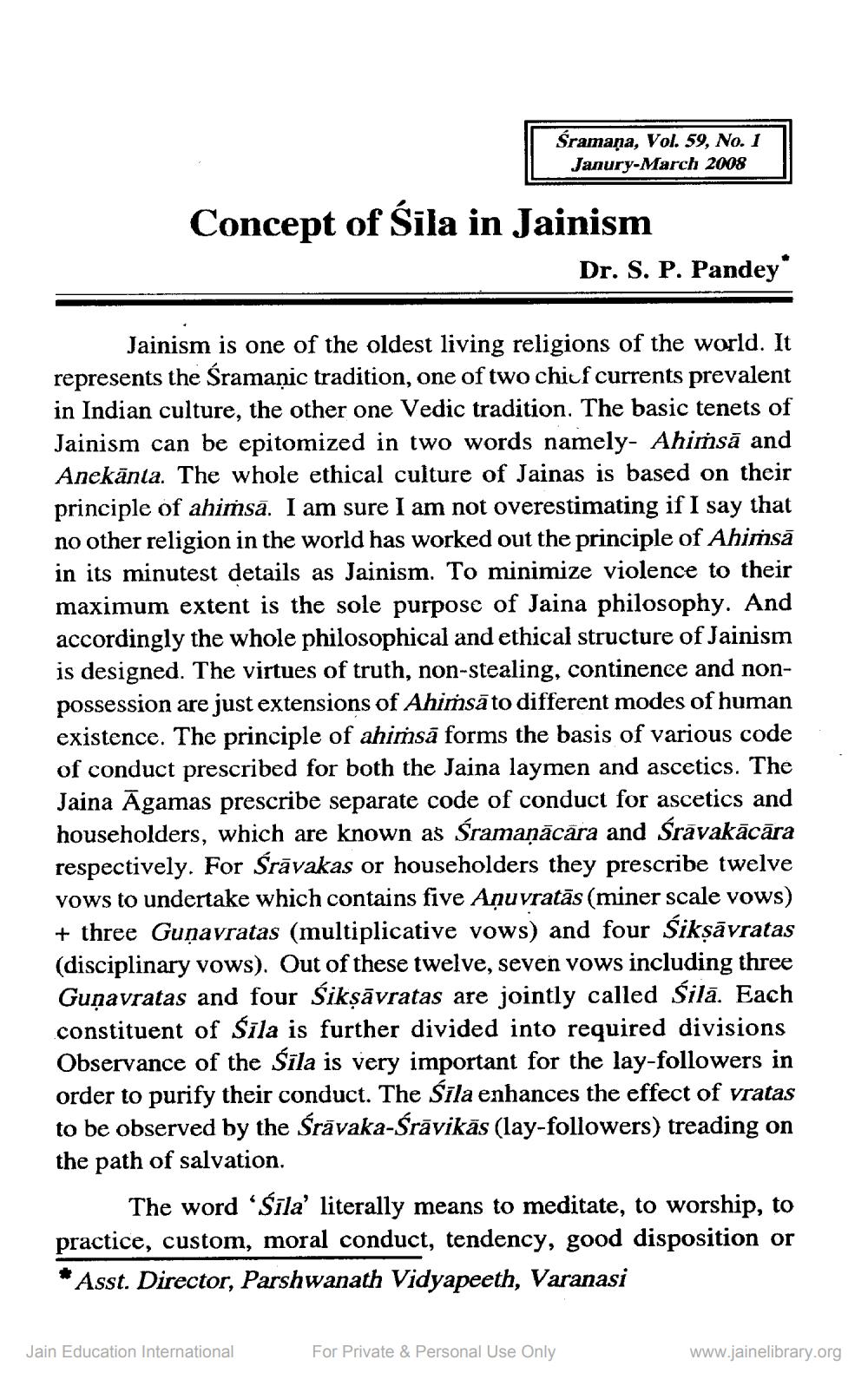________________
Śramaņa, Vol. 59, No. 1 Janury-March 2008
Concept of Śila in Jainism
Jainism is one of the oldest living religions of the world. It represents the Śramanic tradition, one of two chicf currents prevalent in Indian culture, the other one Vedic tradition. The basic tenets of Jainism can be epitomized in two words namely- Ahimsā and Anekanta. The whole ethical culture of Jainas is based on their principle of ahimsa. I am sure I am not overestimating if I say that no other religion in the world has worked out the principle of Ahimsā in its minutest details as Jainism. To minimize violence to their maximum extent is the sole purpose of Jaina philosophy. And accordingly the whole philosophical and ethical structure of Jainism is designed. The virtues of truth, non-stealing, continence and nonpossession are just extensions of Ahimsa to different modes of human existence. The principle of ahimsa forms the basis of various code of conduct prescribed for both the Jaina laymen and ascetics. The Jaina Agamas prescribe separate code of conduct for ascetics and householders, which are known as Śramaṇācāra and Śrāvakācāra respectively. For Śrāvakas or householders they prescribe twelve vows to undertake which contains five Anuvratās (miner scale vows) + three Guṇavratas (multiplicative vows) and four Śikṣāvratas (disciplinary vows). Out of these twelve, seven vows including three Gunavratas and four Sikṣāvratas are jointly called Śilā. Each constituent of Śīla is further divided into required divisions Observance of the Śīla is very important for the lay-followers in order to purify their conduct. The Śīla enhances the effect of vratas to be observed by the Śravaka-Śrāvikās (lay-followers) treading on the path of salvation.
Jain Education International
Dr. S. P. Pandey
The word 'Sila' literally means to meditate, to worship, to practice, custom, moral conduct, tendency, good disposition or * Asst. Director, Parshwanath Vidyapeeth, Varanasi
For Private & Personal Use Only
www.jainelibrary.org




